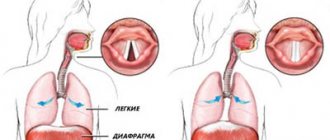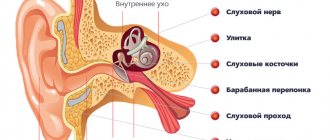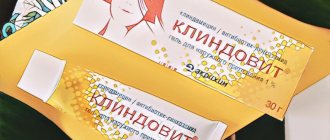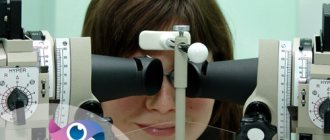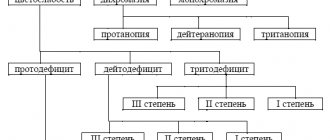What does dandruff look like?
White flakes, clearly visible on dark clothes, are nothing more than dandruff. It consists of scaly particles of keratinized skin, appears at the roots of the hair, and then easily falls off. Most often, the disease is provoked by the activity of the Malassezia fungus. It is present on the skin of every person, but only under certain conditions does it begin to multiply and cause dandruff.
When the fungus on the scalp becomes active, a person feels itchy. Depending on the reasons that caused the spontaneous reproduction of microorganisms and the characteristics of the sebaceous glands, seborrhea (this is what the disease accompanied by peeling is called) is divided into dry, oily, and mixed. It can also manifest itself in other forms.
Is dandruff contagious or not?
Trichologists answer this question as follows: seborrhea itself is not an infectious disease, but this disorder occurs due to fungal activity, and fungi (including Malassezia) are transmitted from person to person. Nevertheless, Malassezia is found in the microflora of the skin of every person, and its activity is not associated with infection, but with disruption of the sebaceous glands, which can be caused by various reasons, mainly of a non-infectious nature. [12], [13], [14]
Dry seborrhea
If there is a lack of activity in the sebaceous glands, dry seborrhea can occur. The reason is not only low sebum production, but also:
- stress, anxiety, psychological shocks;
- hereditary factors;
- hormonal disruptions (puberty or abnormalities in the functioning of the glands);
- use of incorrectly selected cosmetics, as well as cosmetic paints with ammonia;
- poor hygiene, excessively frequent hair washing and blow-drying;
- lack of vitamins (this affects the general health and functioning of the glands).
A deficiency of sebum contributes to the appearance of inflammatory processes on the scalp, which provoke the proliferation of Malassezia fungi. Symptoms of dry seborrhea:
- discoloration, dryness and brittleness of hair;
- formation of cracks in the epidermis;
- the appearance of large scales that quickly peel off.
If measures are not taken, dry seborrhea moves into the next stage. In addition to dandruff, a person is bothered by redness of the skin and seborrheic spots. Sometimes dry seborrhea is an advanced form of oily seborrhea, in other cases the problem arises on its own.
Why does dandruff appear in children?
Not only adults, but also children of different ages suffer from dandruff. In infants, this is due to insufficient development of the sebaceous glands. Sometimes it appears during breastfeeding in the form of an allergy to foods consumed by the mother. It can also appear due to the wrong bathing product or shampoo.
Dandruff is also common in teenagers. This is explained by the fact that during puberty, the sebaceous glands work in an enhanced mode and produce too much sebum.
Oily seborrhea
If too much sebum is produced, this can also lead to dandruff. The fact is that the secretion does not contain enough antibacterial substances. Favorable conditions are created for an increase in fungal colonies. The active activity of Malassezia leads to detachment of the epidermis and the appearance of oily dandruff.
Symptoms of oily seborrhea:
- greasy hair;
- itching;
- The scales stick together and peel off very poorly.
Oily seborrhea is often accompanied by acne and furunculosis. The skin of the scalp becomes crusty; scratching during itching leads to bloody wounds. If adequate treatment is not carried out, hair will begin to fall out.
Seborrhea, associated with increased sebum production, occurs not only on the scalp. It also appears on the face, especially in the area of the nasolabial triangle, behind the ears and on the chin. On the face, the disease is characterized by enlarged pores and graying of the skin.
The most common cause of oily seborrhea is hormonal imbalances. The disease often plagues adolescents during puberty. Most often, young men suffer, because it is male hormones that provoke the activity of the sebaceous glands.
Normally, seborrhea is temporary; by the age of 25, it goes away in most people. In 10% of cases the disease becomes chronic.
Another common cause of oily seborrhea is genetics.
Also, the impetus for the disease can be:
- frequent stress;
- deviations in the functioning of the nervous system;
- taking hormones;
- problems with the gastrointestinal tract;
- diseases of the genitourinary system.
Treatment of dandruff on the head
There are quite a few ways to treat dandruff, here are the most popular ones:
- lubricating the scalp with moisturizing and keratolytic external agents [13];
- treatment of the scalp with ointments with anti-inflammatory effects [13];
- lubricating the scalp with ointments with antifungal and antibacterial effects [13];
- antifungal drugs that suppress the activity of Malassezia (the most effective here is ketoconazole) [14];
- traditional medicine (lotions, masks and compresses based on herbs and essential oils and others) [18];
- For women, medications that reduce the production of male hormones (isotretinoin) are also suitable if the problem is hormonal in nature [14].
The main thing is to eliminate the cause of the malfunction of the sebaceous glands, otherwise relapses will occur. If a person experiences severe nervous tension, a whole range of measures will be required: strengthening the immune system, good healthy sleep, frequent walks. Depending on what caused the appearance of dandruff, it is necessary to abandon aggressive chemicals, observe personal hygiene rules, improve nutrition, start taking vitamins or eating foods rich in vitamins, or treat diseases of internal organs.
Many people choose shampoos with ketoconazole as the main drug, since this substance effectively fights Malassezia colonies. [14] [15] Such a shampoo is “Perhotal”, which has undergone successful clinical trials in Russia. [16] “Perhotal” is available in two forms: with 2% ketoconazole for treatment and with 1% ketoconazole for the prevention of seborrhea and seborrheic dermatitis.
References:
- [1] https://www.lvrach.ru/2019/08/15437363/
- [2] https://dermatology.con-med.ru/article/223522/
- [3] https://medportal.ru/enc/dermatology/alopecia/3/
- [4] https://materinstvo.ru/pr/id2277
- [5] https://skin.ru/article/kak-gormony-vlijajut-na-kozhu-v-junosti-i-zrelosti/
- [6] https://pro-volosy.info/zhirnaya-seboreya-prichiny-i-lechenie/
- [7] https://skin.ru/article/perhot-osnovnye-prichiny/
- [8] https://biosea.fr/ru/o-produkcii/ingredienti/opasnie-ingredienti/parabeny.html
- [9] https://vkusologia.ru/dobavki/stabilizatory-emulgatory/e487.html
- [10] https://bloggoods.ru/triethanolamine-v-kosmetike/
- [11] https://apico.life/blog-ru/dea-diethanolamine-dietanolamin-2-2-iminodietanol-2-2-digidroksidietilamin-dea-vred-primeneniya-v-kosmetike/
- [12] https://doktorvolos.ru/question/kak-peredaetsja-seboreja-volosistoj-chasti-golovy/
- [13] https://med.vesti.ru/articles/zabolevaniya/lechenie-seborejnogo-dermatita-volosistoj-chasti-golovy-u-vzroslyh/
- [14] https://www.rmj.ru/articles/dermatologiya/Seboreynyy_dermatit/
- [15] https://www.ncbi.nlm.nih.gov/pubmed/11306850
- [16] https://perhotal.ru/wp-content/uploads/research-124.pdf
- [17] https://yarpol2.ru/diagnostika/korka-na-golove-vidy-samye-chastye-prichiny-poyavleniya-i-lechenie.html
- [18] https://vashvolos.com/lechenie-perxoti-narodnymi-sredstvami
This text is not an instruction for use; it is necessary to consult a specialist.
Mixed seborrhea
Mixed seborrhea has characteristics of dry and oily varieties. In particular, patients note that the skin on the face in the middle part is oily, and on the cheeks it is dry. Especially a lot of fat is released in the areas of the crown, chin, forehead, and nose. In other places the fat content is moderate or insufficient.
Doctors also note that a person may be bothered by dry dandruff and oily skin on the face.
Symptoms of mixed seborrhea:
- inflammatory process on the cheeks, scalp, chin, forehead, chest, nose;
- in the area of inflammation, the skin becomes rough;
- redness, itching;
- increased secretion of sebum on the forehead, but decreased secretion in other areas of the face;
- peeling in the area of increased activity of fat-secreting glands, yellowish or gray scales;
- peeling of dry areas of skin.
All the factors listed above as causes of other types of the disease can provoke mixed seborrhea. Most often the problem is associated with hormonal changes or disruptions. Heredity plays an important role. Stress and anxiety can also contribute to the growth of fungi.
Traditional medicine
If dandruff is not abundant and does not bother a person much, you can try to get rid of it using traditional medicine. She has many very effective recipes in her arsenal. But in advanced cases, especially when the scalp suddenly becomes dry or too oily, it is recommended to consult a doctor who will prescribe effective medications. You can also supplement them with folk remedies for dandruff.
Masks
- A mask made from rolled oatmeal (which requires cooking) gives a good result. To prepare it, you will also need the herb of oregano, chamomile, nettle or calendula, which you need to pour boiling water over and leave for 15 minutes. The prepared infusion is poured into the flakes and wait until the mass acquires a thick, uniform consistency. The mask should be kept on the scalp for two hours. Its use for a month relieves itching, dandruff, and also significantly improves the condition of the hair.
- A mask made from fermented milk products also gives a good effect. You need to mix half a glass of 2% natural yogurt or kefir, chicken yolk and 6 drops of vegetable oil (preferably burdock or coconut), apply the mixture to your hair, cover with a plastic cap and towel and leave for 2 hours.
- Cosmetologists also recommend making a mask from onion juice. It not only eliminates dandruff, but also strengthens and nourishes the hair. To prepare it you only need 5 tablespoons of onion juice and 8 tablespoons of burdock oil. You need to keep it for 1 hour. You can take a whole onion, chop it until it becomes mushy and add 1 tablespoon of honey. The mixture is heated in a water bath, applied to the hair and left for 15 minutes. Onion masks are very effective, but they have one drawback - a strong specific smell.
Infusions
- In addition to masks, you can use infusions and decoctions of herbs. Nettle is good for hair and scalp. You need to take 200 grams of crushed leaves, pour 1 liter of water over them, boil over medium heat, leave for several hours and strain. It is recommended to rinse your hair with this decoction after each wash.
- A decoction of calamus roots relieves itching and eliminates flaking of the skin. To prepare it, take 5 tablespoons of finely chopped root, fill it with hot water, keep it in a water bath for half an hour and infuse for another hour. After straining, an effective remedy is obtained. In a similar way, you can prepare an infusion of burdock and oak bark.
- Chamomile and linden infusion helps with dry dandruff and itchy skin. A few tablespoons of these herbs are poured into a liter of hot water and left for half an hour. Strain and get an infusion that can be used to rinse your hair after washing. You can also prepare an infusion of calendula and oregano or mint and carrot tops.
Other means
Acetylsalicylic acid is used to treat oily seborrhea. Several tablets are ground into powder and added to shampoo. While washing, leave the composition on for several minutes and then rinse thoroughly.
For dry seborrhea, it is recommended to wash your hair with raw yolks of 2-3 eggs, depending on the length of the hair. They are carefully separated from the proteins (otherwise it will be difficult to rinse the hair), lightly beat with warm water until the consistency of the emulsion. The resulting mixture is used as a shampoo with a good cleansing and moisturizing effect.
Tubular seborrhea
This is a special type of seborrhea, the main symptom of which is the formation of scales not on the scalp, but on the hair. This is explained by the fact that the active reproduction of the Malassezia fungus began precisely on the hairline. Dandruff looks like small tubes, which are sometimes confused with nits.
Tubular seborrhea is also characterized by severe itching and redness. Most often it occurs in adolescence, when hormonal levels are actively restructured.
Also, the causes of tubular dandruff can be:
- lack of vitamins;
- metabolic disease;
- improper or insufficient hygiene;
- improper or poor nutrition, diets;
- physical and emotional stress;
- skin diseases;
- chronic illnesses, hepatitis, HIV and other diseases that reduce immunity.
Proper preventative care for the scalp and hair
- The first and main rule is to choose hair and scalp care products in accordance with their type and needs.
- Wash your hair whenever it gets dirty. Use cleansers with mild, hypoallergenic formulas based on natural soothing and restorative ingredients.
- If you have a hypersensitive scalp, choose sulfate-free formulas labeled “SLS free” on the packaging. Such products act softer and more delicate.
- Apply masks and conditioners to your hair, spacing 2-5 cm from the roots (unless otherwise specified by the manufacturer) - residues from the treatment can cause dehydration and an allergic reaction of the scalp.
Seborrheic dermatitis
When listing the types of dandruff, one cannot fail to mention seborrheic dermatitis. This is a general term for diseases that are associated with the active proliferation of fungi, the formation of crusts, redness, itching and peeling.
Seborrheic dermatitis can occur with infectious diseases such as lichen, or non-infectious diseases - psoriasis, neurodermatitis. Symptoms appear on the skin in areas with impaired sebum secretion.
The fungus produces lipotic enzymes that break down fatty acids. When there are too many enzymes, an inflammatory reaction occurs on the skin. Outwardly, at first it looks like peeling. Scratching leads to the formation of bleeding wounds.
The symptoms of seborrheic dermatitis are similar to dandruff. However, we are talking about it only if more than 83% of the microflora of the scalp consists of pathogenic fungi. For dandruff, this figure is 74%. Thus, dandruff is the first stage of seborrheic dermatitis. If left untreated, it will lead to serious consequences.
Why does dandruff occur?
As mentioned above, this is the result of fungal activity. It parasitizes on fatty environments. The fungus produces lipases and phospholipases to break down sebum and produce the fatty acids it needs to live. The fungus also produces extracellular proteins that enter the skin and lead to the formation of dandruff.
Under normal conditions, epidermal cells live 25–30 days. When pathology occurs, their physiological cycle is shortened to 5–14 days. In such a short period of time, cells cannot normally go through the entire development cycle, do not lose moisture, and therefore stick together. They do not peel off individually, as they should normally, but in flakes. This is dandruff.
Psoriasis and dandruff
Dandruff on the head appears not only due to the activity of the sebaceous glands and fungi. Sometimes scales on the hair occur with psoriasis. This is a common disease associated with heredity and the body's immune system. The disease is chronic, its therapy is designed to reduce symptoms.
Signs of psoriasis:
- the appearance of pink or red spots (occur not only on the head, but also on the arms, legs, and other parts of the body);
- gray scales on plaques;
- itching, sometimes pain.
An outbreak of this autoimmune disease can easily be confused with seborrhea. It is important to see a doctor on time, because the treatment of these ailments is very different.
Psoriasis appears between the ages of 15 and 35 years. Outbreaks of the disease can be caused by:
- poor nutrition;
- cold or dry air;
- stress.
The causative agent is not fungi, but the person’s own immunity, which attacks healthy cells, which causes active growth of the epidermis.
Therapy requires close supervision by a dermatologist. Both local and oral medications can be prescribed. Phototherapy, IV courses, and injections help relieve symptoms.
The structure of the skin and its appendages
Skin is a part of the body that performs many functions:
- Protective. A function that protects the body from harmful influences - chemical, mechanical, hypothermia and overheating, etc.
- Respiratory. The surface of the skin makes 2% of the total “breathing” of the entire human body.
- Regulatory. Mineral and water balances, thermoregulation (due to sweating) are carried out by this function.
The skin consists of three components:
- Epidermis is the outer layer.
- The dermis, that is, the skin itself, is an intermediate layer (connective tissue). The dermis is the support for blood vessels, nerves and skin appendages.
- The hypodermis is the layer that lies deeper than the others.
Hair, sebaceous, sweat glands are skin appendages on the head.
Epidermis
Several layers make up the epidermis. Cells originate in the basal layer, some of them continuously move towards the stratum corneum, changing their appearance along the way and, at the final stage, losing their nucleus. By the end of the movement, these cells become keratinized, nuclear-free scales that form the stratum corneum.
These scales are constantly replaced by others that rise from the basal layer. This is how skin regeneration or renewal occurs. Melanin, which determines the color of hair and skin, is produced by cells located in the cuticle. And the immune system of the skin is macrophages.
Dermis
A set of bundles of connective tissue and elastic fibers, which is the dermis, helps maintain the shape of the skin, that is, stretch and contract without visible changes.
Here are located:
- nerves;
- hair follicles;
- vessels;
- sweat and sebaceous glands.
Sweat creates comfortable thermoregulation and removes dangerous substances from the body. The sebaceous glands have an equally important function. They produce sebum, which protects against hypothermia and drying out, and prevents the dermis from cracking.
Hypodermis
The layer that is located deeper than the others. This is where blood vessels and nerve trunks are located. The thickness of the hypodermis on the head is about 2 mm.
What not to do?
Absolutely forbidden:
- Scratch your head. Itchy dandruff can be very uncomfortable, but scratching and scratching your skin will make the problem worse. Through the slightest damage, infections can easily penetrate, which can lead to the formation of pustules;
- Use alcohol-based products, as they greatly dry out the skin;
- Dye your hair and use other chemical hair products;
- Use metal combs; the teeth of such a comb can damage the scalp and cause more dandruff to appear.
- Keep the use of hair dryers and curling irons to a minimum.
Treatment of an advanced case
In severe cases of dry seborrhea (when the shoulders are regularly strewn with white flakes of dead skin), treatment with 10% sulfur ointment is suggested.
Here are the main steps of the procedure:
- From the first to the eighth day of treatment, the ointment should be rubbed into the scalp daily. To do this, divide your hair into thin strands and apply the substance along the partings, rubbing it into each part for at least 4 minutes.
- On the ninth, give your hair a rest: don’t make masks, don’t go to the shower, don’t use ointment.
- On the tenth day of treatment, rinse your hair with clean, freshly boiled water and a specialized shampoo for dry dandruff.
- From days 11 to 14 of treatment, treat the scalp with a solution of boric acid (2 teaspoons of acid per 150 grams of hot water). Rub the liquid into the roots of your hair before going to bed, wrap wet hair in a scarf and leave overnight.
- Then there is a seven-day rest from the procedure and the entire treatment is repeated. Ideally, you need to do it 3 times.
Life after solving a problem
After treatment in a beauty salon, the itching disappears, the skin stops flaking, and the hair takes on a healthy and well-groomed appearance. To prevent the problem from returning, SM-Cosmetology specialists advise:
- remove fried, fatty and smoked foods from the diet, limit the share of simple carbohydrates in the daily menu;
- establish sleep and wakefulness patterns;
- give up bad habits - drinking alcohol and smoking;
- When washing your hair, use warm water. Hot stimulates the production of sebum, and too cold - spasms blood vessels, impairs the process of supplying the skin with oxygen and nutritional components.
Getting rid of dandruff on your own is a difficult task. The help of a specialist will be required at least at the stage of determining the cause of the disease. In addition, the doctor will help you choose an effective complex therapy regimen and give recommendations regarding the prevention of seborrhea.
If long-term self-medication is not part of your plans, and you want to quickly solve the problem without the risk of complications, contact a dermatologist at the SM-Cosmetology clinic. To schedule an initial consultation, please call.
—>
Diagnosis of the problem in the clinic
Before you begin treating dandruff, you need to determine its causes. All questions can be accurately answered only after a detailed diagnosis.
At the initial examination, the SM-Cosmetology doctor determines the size and nature of the scales, examines the scalp to assess color changes, the presence of plaques and scratches. In addition to a visual examination, the doctor refers the patient to a biochemical blood test, the results of which will allow us to look at the problem more broadly and, possibly, identify hidden causes.
If there is any doubt about the diagnosis, a histological examination of a skin biopsy is indicated, in which biological material is taken from the affected area and examined under a microscope.
